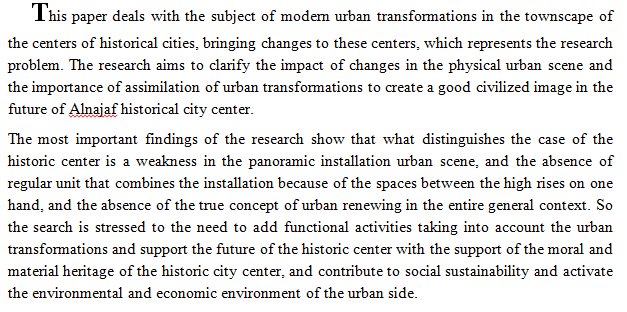
KE Sharquie, JR Al-Rawi, AA Noaimi, MM Jabir, Iraqi Postgraduate Medical Journal, 2009
S Khalifa E, AR Jamal R, N Adil A, J Munqithe M…, 2009
The current study aims to investigate the effect of strategic knowledge management practices on an excellent performance at the Institution of Industrial Development and Research- the Ministry of Iraqi Industry (IDRMII). The present research is designed according to the descriptive method. To achieve the mentioned research objective, the researchers used the questionnaire as the main data collection tool. The research sample was 150 managers who are working at the top and middle management levels. To analyses the data gathered and reaching the results, several statistical techniques were used within AMOS.V25, SPSS.V21Software, This study reached a set of results, the most important of which is the existence of a positive correlat
... Show MoreAt the last years, the interesting of measurement spicilists was increased to study differential item functioning (DIF) wich is reflect the difference of propability true response for test item from subgroups which have equal level of ability . The aims of this research are, inform the DIFat Namers’scale(2009) for mental health to prepare students and detect items that have DIF. Sample research contants (540) students, we use Mantel- Haenzel chi-square to detect DIF. The results are point to there are (26) items have DIF according to gender which are delated form the scale after that.
Matching between wind site characteristics and wind turbine characteristics for three selected sites in Iraq was carried out. Site-turbine matching for potential wind power application in Iraq has not yet been well reported on. Thus, in this study, five years’ wind speed data for sites located in Baghdad (33.34N, 44.40E), Nasiriyah (31.05N, 46.25E), and Basrah (30.50N, 47.78E) were collected. A full wind energy analysis based on the measured data, Weibull distribution function, and wind turbine characteristics was made. A code developed using MATLAB software was used to analyse the wind energy and wind turbines models. The primary objective was to achieve a standard wind turbine-site matching based on the capacity factor. Another matching
... Show More (1)
(1)
Divine laws are policies that Allah runs his servants, people are different in the accord-ing to the difference of periods .Each period has its kind of conduct and furtune of kindness and their own interest . As every nation has a kind of conduct to be applicable to them even if it will be decay in the rights of the others . For this meaning it would be permitted to meet two prophets in the same period according to the difference of their interest.
The prophecy of Mohamad has been demonstrated and his message was famous according to his miracles and decisive signs. And people from other religions tried to deny his message . As the Christians tried to deny his message by making nobody believe his signs and miracles .
And as the Jews
An electrochemical sensor based on manganese dioxide nanorodMnO2and Graphene oxide (GO) functionalized with 4-amino, 3-substituted 1H, 1, 2, 4 Triazole 5(4H) thion (FGO)/MnO2Nanocompositewas developed for voltammetric determination of Tetracycline (TET).The working electrode WE of SPCE was modified bya drop casting method. X-ray powder diffractometer (XRD), scanning electron microscopy (SEM) and FT-IR were employed to characterize the synthesized FGO/MnO2. The determination of TET at the modified electrode was studied by cyclic voltammetry (CV) and differential pulse voltammetry (DPV) in the phosphate buffer solution (PBS).TET show sharp increase in the oxidation peaks in the pH 2.Voltammetric characteristics of TET (Epa, Ipa) were estimate
... Show MoreDiscrete Raman amplifier have many attractive aspects over rare-earth doped fiber amplifier such as (EDFA) including arbitrary gain band, better adjustability of gain shape, and better linearity. This paper shows that discrete Raman amplifier has higher gain in bidirectional pumping than counter pumping. The gain increases with increasing fiber length, and the noise figure remain at the same value for short fiber length.
In this paper, a study was made to determine the properties of Jovian radio bursts emitted at frequency 20.1MHZ. The data were provided from the Radio Jove archive for twelve years (2000-2012) for multi stations. The duration time for Long bursts (L) was (10-30) seconds and for Short bursts (S) was (10-20) seconds. The effect of radio bursts from the Sun and the galactic background were calculated at the same frequency and were found that radio bursts from the Sun will reduce the occurrence probability of Jovian radio bursts much more than radio bursts from the galactic background. The distribution of Jovian radio bursts was different; the occurrence probability with respect to the northern latitudes was more than the southern latitudes.
